|
Royal Albert China - Series |
||||||||||||||||||||||||||||||||||||||||||||||||||||||||||||||||
|
|
|
|||||||||||||||||||||||||||||||||||||||||||||||||||||||||||||||
 |
||||||||||||||||||||||||||||||||||||||||||||||||||||||||||||||||
 |
 |
 |
||||||||||||||||||||||||||||||||||||||||||||||||||||||||||||||
| Series of Six: Anne, Catherine, Charlotte, Emily, Helen, and Jane | ||||||||||||||||||||||||||||||||||||||||||||||||||||||||||||||||
Mugs |
||||||||||||||||||||||||||||||||||||||||||||||||||||||||||||||||
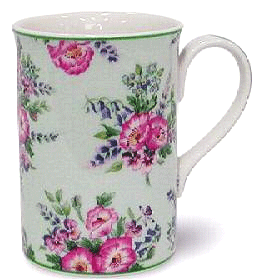 |
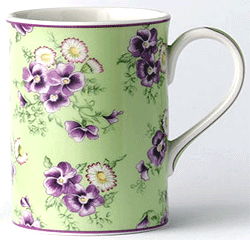 |
|||||||||||||||||||||||||||||||||||||||||||||||||||||||||||||||
 |
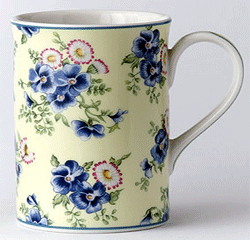 |
|||||||||||||||||||||||||||||||||||||||||||||||||||||||||||||||
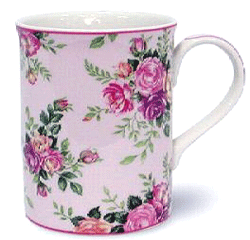 |
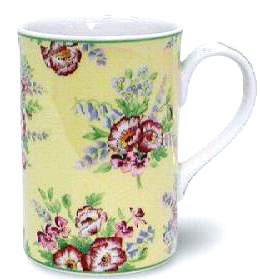 |
|||||||||||||||||||||||||||||||||||||||||||||||||||||||||||||||
The Bronte Sisters Patrick and Maria Bronte had six children (from oldest to youngest): Maria, Elizabeth, Charlotte, Branwell, Emily, and Anne. Soon after Patrick had been appointed to a parish in Haworth, Yorkshire, his wife died, leaving the parson and the young children behind (the oldest, Maria, only seven years old). Maria, Elizabeth, Charlotte, and Emily began attending Cowan Bridge School three years after their mother's death. Tragically, Maria and Elizabeth both died of tuberculosis, which had infected the school. Patrick hastened to bring Charlotte and Emily home after learning of the deaths of his two older daughters. Six years after the loss of her sisters, Charlotte set off for Roe Head School. She returned a little after a year later and taught her sisters. In 1835, Charlotte became a teacher at Roe Head, and Emily became a student there, but she only lasted three months. She would speak to no one except Charlotte and became very thin and pale. She was soon back at Haworth. Anne took Emily's place at Roe Head. In the next few years, Emily became a teacher at Law Hill School. Failure was the result. Emily endured her position for six months; she disliked teaching very much, and longed for the moors that surrounded her home. In February of 1842, Charlotte and Emily went to Brussels. They stayed at the Pensionnat Heger, where they became pupils. Madame Heger was the head of the school. The two sisters learned French, German, music, singing, writing, arithmetic, and drawing. At home, Aunt Branwell had become very ill. Charlotte and Emily came home, only to find her dead and buried. Afterwards, Emily stayed at the Parsonage, but Charlotte went back to Brussels. She became a teacher at the Pensionnat, but she was very dissatisfied with her students. In a letter to Branwell, she said: "I can discern only one or two [pupils] who deserve anything like regard...They have not intellect or politeness or good-nature or good-feeling..." Madame Heger thought that Charlotte had fallen in love with her husband, and therefore became very cold and distant towards her. Monsieur Heger taught her German, but otherwise, had little to do with her. Early in 1844, Charlotte came home, but continued to write to Monsieur Heger, even though he allowed her to write to him only twice a year. Branwell's talents seemed very promising. He was seen as the gifted one in the family. His father had hired a painting master to teach his only son, and it was also thought that Branwell could possibly turn out to be a poet or a journalist. Unfortunately, Fate dictated otherwise. Branwell was to go to London to attend the Royal Academy Schools, but he did not present himself as planned. Instead, he roamed the streets of London, wasting his money on alcohol. Later on, when he had failed at portrait painting and working on railroads, he tried his hand at tutoring (the Robinson family hired him). Branwell was dismissed because of "irregularities," as it was termed. He had been having an affair with Mrs. Robinson. Finally, at age 31, Charlotte's only brother died. Meanwhile, Charlotte, Emily, and Anne had begun publishing their poetry and novels. Charlotte had written Jane Eyre (1846), Shirley (1849), and Villette (1853). It was not until after her death that The Professor was published in 1857. Charlotte had begun several novels, but she never finished them. Emily's novel Wuthering Heights was published in 1847. Anne's accomplishments included Agnes Grey (1847) and The Tenant of Wildfell Hall (1848). All of the Bronte sisters had contributed poems to a collection of poetry, entitled Poems by Currer, Ellis, and Acton Bell (1846). Currer, Ellis and Acton were the aliases assumed by Charlotte, Emily, and Anne Bronte. The sisters lived in such times that women were not always given a fair chance in the business world. Therefore, they assumed masculine names, so that their books would have a better chance of being published. Disaster struck in October of 1848, when Emily fell sick with tuberculosis. In December of 1848, Emily's coffin was laid in the same vault as that of her mother and brother. Anne soon followed her sister to the grave, after she was consumed by the same relentless disease that had deprived her mother, brother, and three sisters of their lives. "...who cares for imagination? Who does not think it a rather dangerous, senseless attribute - akin to weakness - perhaps partaking of frenzy - a disease rather than a gift of the mind? Charlotte also wrote to her publisher, when she was announcing the completion of Shirley: "Whatever now becomes of the work, the occupation of writing it has been a boon to me. It took me out of dark and desolate reality into an unreal but happier region." In a later letter to the same publisher, she wrote: "The faculty of imagination lifted me when I was sinking, three months ago...I am thankful to God, who gave me this faculty; and it is for me a part of my religion to defend this gift and to profit by its possession." During this time, her father's curate, the Reverend Arthur Bell Nicholls, had been spending a great deal of time with Patrick and Charlotte. It was not long before he proposed, and Charlotte accepted. They were married on the morning of Thursday, June 29, 1854. One year after the marriage, Charlotte died. The cause of her death was tuberculosis, and it is thought that complications in early pregnancy hastened the process. Patrick Bronte ended up outliving his wife and six children. His only companion was Charlotte's husband, who looked after Charlotte's father, in compliance with Charlotte's last wishes. Patrick, at age 84, was the last of his family to die |
||||||||||||||||||||||||||||||||||||||||||||||||||||||||||||||||
Anne, Emily, and Charlotte Brontë |
Emily |
|||||||||||||||||||||||||||||||||||||||||||||||||||||||||||||||
|
|
||||||||||||||||||||||||||||||||||||||||||||||||||||||||||||||||








